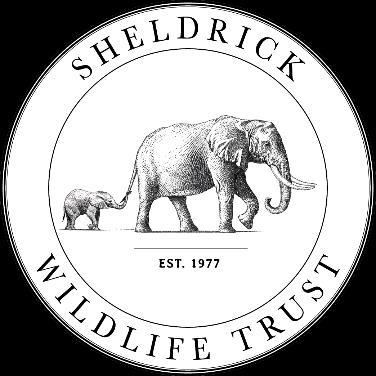

SWT/KWS RIFT VALLEY MOBILE VETERINARY UNIT
JUNE 2025
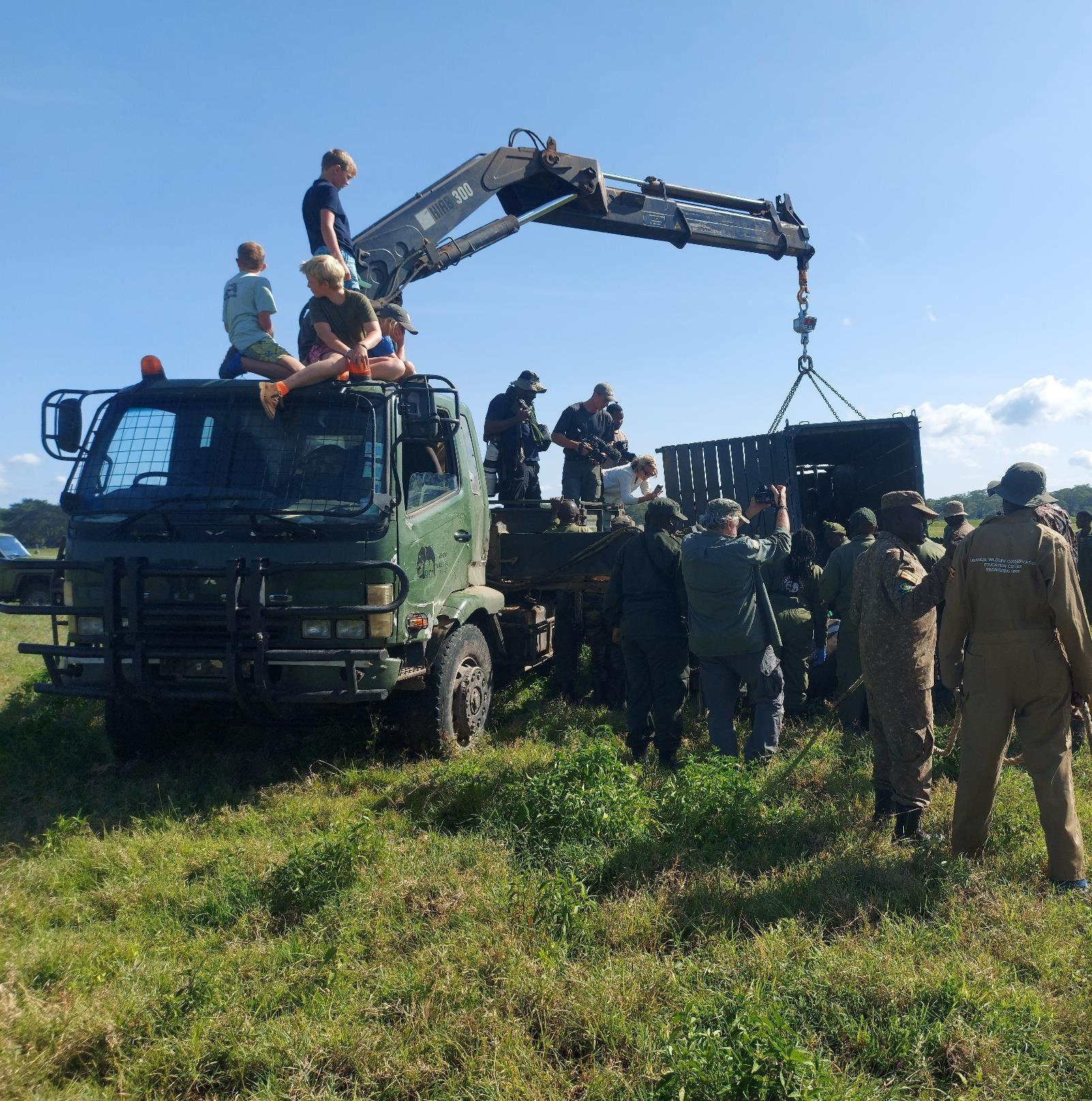



10 Cases in June 2025 4 Poaching Cases
June Report by Dr.
Titus Kaitho

The Vet Unit attended to 10 cases in June, with a reduction in poaching cases being evident. Other than routine clinic work the Rift Valley Mobile Veterinary Unit assisted with the translocation of 3 black rhinos and visited the following areas; Lake Nakuru NP, Hells Gate NP, KWS Naivasha Station, Kijabe farm, Isaateni Wildlife Conservancy – Mara Ecosystem, Mt Elgon NP and Naivasha conservancies.
Acknowledgement
We sincerely thank Sheldrick Wildlife Trust (SWT) for support, resources & sponsorship of the Rift Valley Mobile Veterinary Unit. Chief Executive Officer SWT, Angela Sheldrick, we acknowledge your unwavering support and interest in the work undertaken by the Mobile Veterinary Unit. Kenya Wildlife Service is acknowledged for general operational & leadership support. Wildlife Research & Training Institute (WRTI) supported the activities by hosting staff at WRTI. We sincerely thank all stakeholders and scouts and all who reported wildlife cases in distress. Thank you all.
Case Details
June 2025

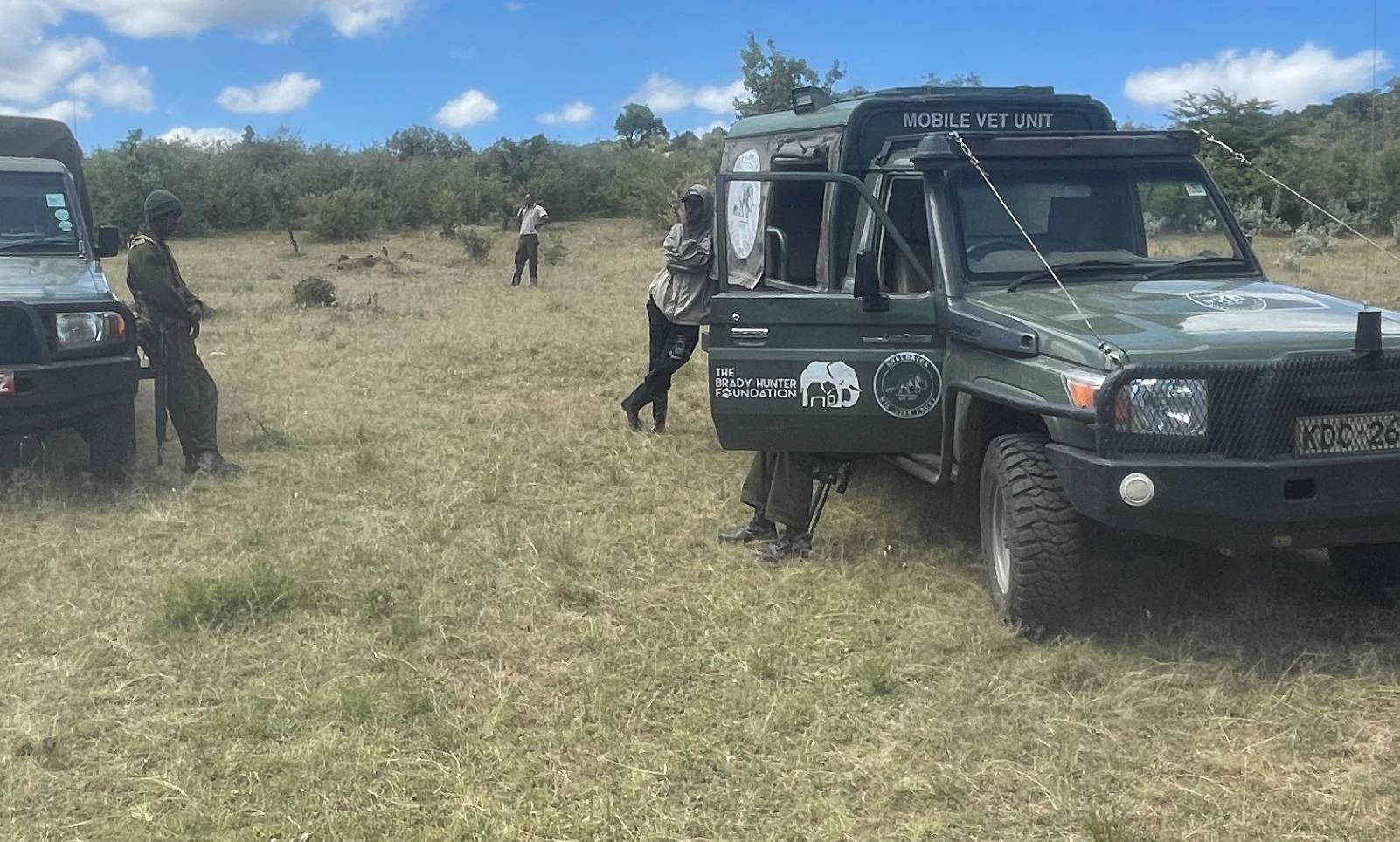
Case 1 – 7th June 2025
Black Rhino Relocation
Lake Nakuru National Park
This was an approved rhino translocation activity to reduce congestion in Lake Nakuru NP, with necessary approval(s) to Segera Wildlife Sanctuary. This was a part of large operation exercise of translocating 21 rhinos to Segera Wildlife Sanctuary to populate and enhance the genetic diversity of this meta population.

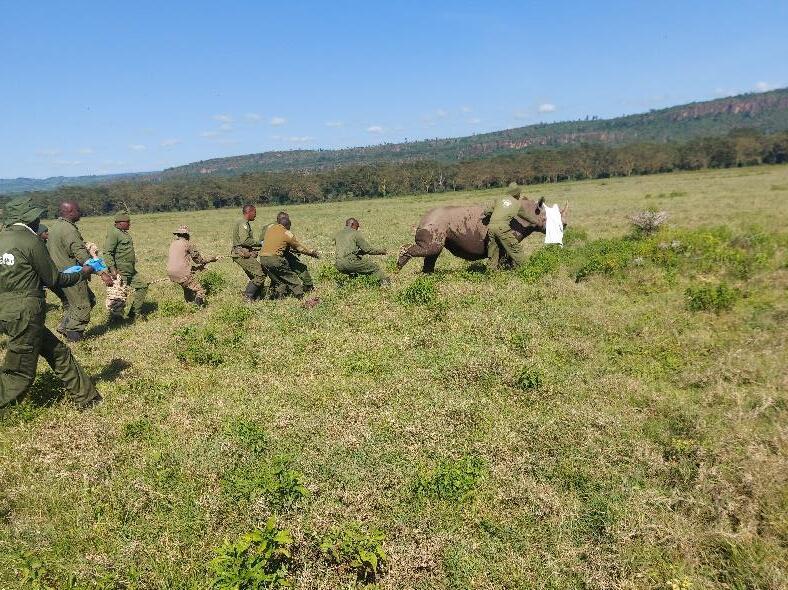
Immobilisation
The rhinos were searched through support of a SWT helicopter and driven to a clear grassland area. The rhinos were darted with a combination of Etorphine Hcl and Azaperone Tartrate with dosages varying depending on age and size. We rapidly administered intravenously 5mg Butorphanol plus 40mg Doxapram, to ensure stable and safe levels of anaesthesia. Rhino respiration was supplemented with oxygen and vital parameters were monitored. The rhinos was ear tagged and clean animals were ear notched. A total of three rhinos were darted, one at a time, then loaded into the transport crate.
Samples were also collected from each rhino such as blood, fecal matter, ticks and tissue/hair samples.
Relocation, revival and prognosis
After reversal of anaesthesia each rhino was then loaded onto the translocation crate and lifted using a lifting crane onto the transport lorry and transported successfully the same day to Segera Wildlife Sanctuary.


Buffalo
One male buffalo was freely roaming at night and sometimes during the day in KWS Naivasha Station offices and residential area posing a threat to people’s lives. KWS Naivasha PAC team requested help.
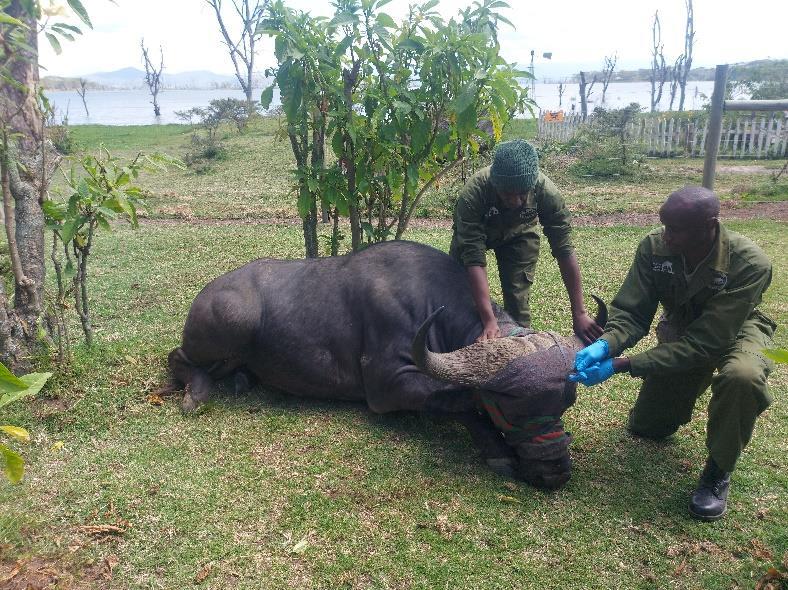

Immobilisation
The male buffalo was darted using 9mg etorphine plus 80mg Azaperone darts. The buffalo was manually loaded onto a pick - up and translocated under general anaesthesia in a pick - up truck to Hells Gate NP.
Reversal and prognosis
At the release site we reversed the buffalo from general anaesthesia using 200mg of Naltrexone by IV route and a ¼ of the dose by IM route to avoid re-narcotization. Prognosis of the case is good. .
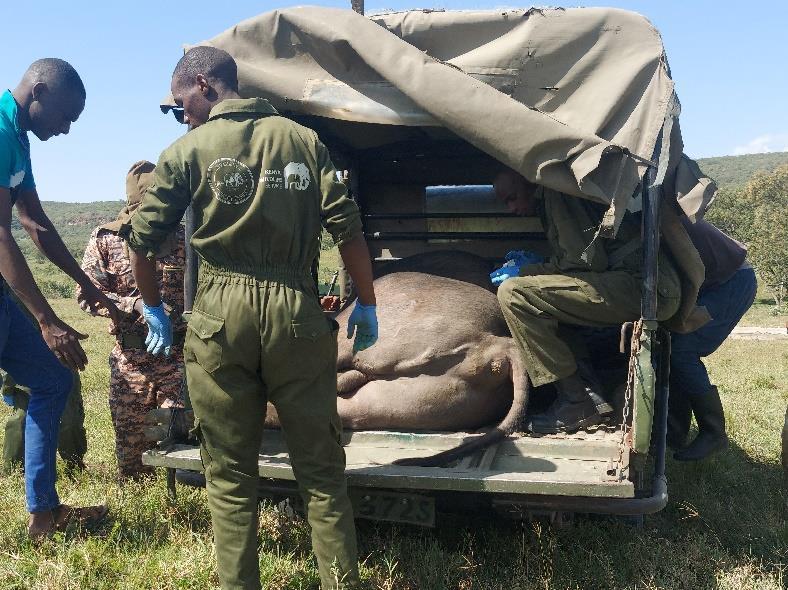

Case 3 – 9th June 2025
Elephant Spear Isaten Conservancy, Masai Mara
Isaaten Conservancy reported a female elephant with a spear on the back on 08.06.2025 in Masai Mara. The injury was a penetrating spear wound. The case was confirmed in writing from the AD Narok County. We travelled from Naivasha to Masai Mara.
Search
We searched for the injured elephant at Isaaten Conservancy comprising a team of KWS rangers from Nkoilale outpost, Siana Conservancy, Mara Elephant Project, Isaaten Conservancy and Rift Valley MVU staff.
On 09.06.25 at 10.00 am the injured elephant was sighted in thick bush. We tried to flush her out of the bush using thunder flash and blanks. Unfortunately, the elephant ran into thicker bush, and we lost sight of her. During the afternoon hours we tried to locate the injured elephant with the support of a MEP drone. We also did foot tracking in the bush, unfortunately we failed to locate the injured elephant. We began the search early morning on 10.06.2025 with the support of a MEP drone in the thick acacia bush and covering the entire conservancy, with guided drives using 4 vehicles and more than 40 rangers from partners. In addition to this, several rangers had been stationed in strategic observation points in the Conservancy to support the exercise. We also did foot tracking of the injured elephant. Unfortunately, by close of business on 10.06.2025 we failed to see the injured elephant. The operation was called off after a debrief on that day.
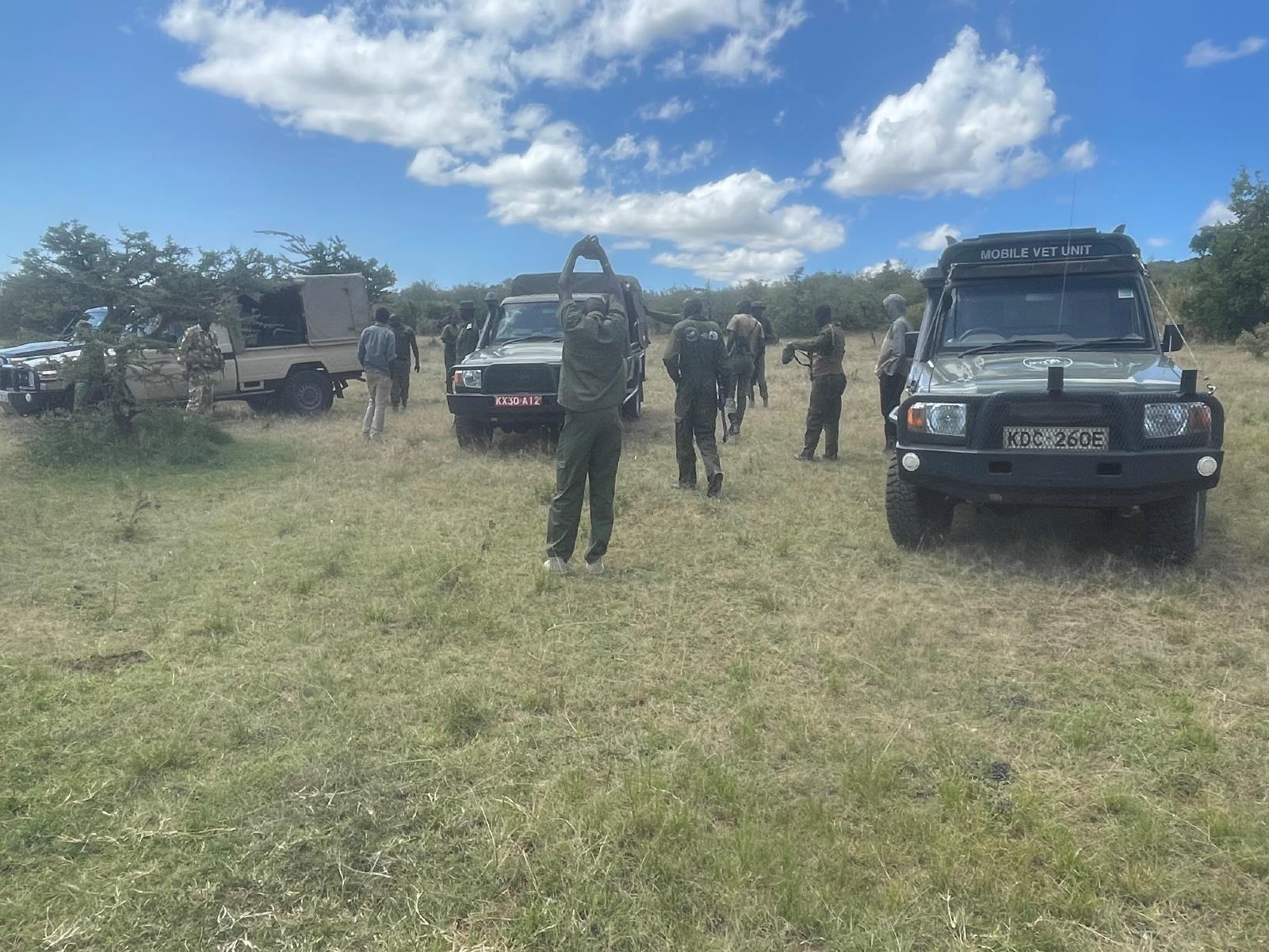
This case was reported by Mundui Estates staff


Immobilisation, examination and treatment
The zebra was darted using 5mg Etorphine plus 80mg Azaperone.
On examination the zebra had been snared and wounded by a wire on the right hind leg. The wound was suppurative and infected. We cleaned the wound using water and rinsed the same using tincture of Iodine. A fly repellent (Alamycin® Aerosol) was applied.
The zebra was also administered 9,000mg Betamox, 250mg Flumeg, 5ml Noromectin and 40ml Butasal.
Reversal and prognosis
We reversed the zebra from anaesthesia using 75mg of Naltrexone given by IV and ¼ of the dose by IM route. Prognosis of the case is good.
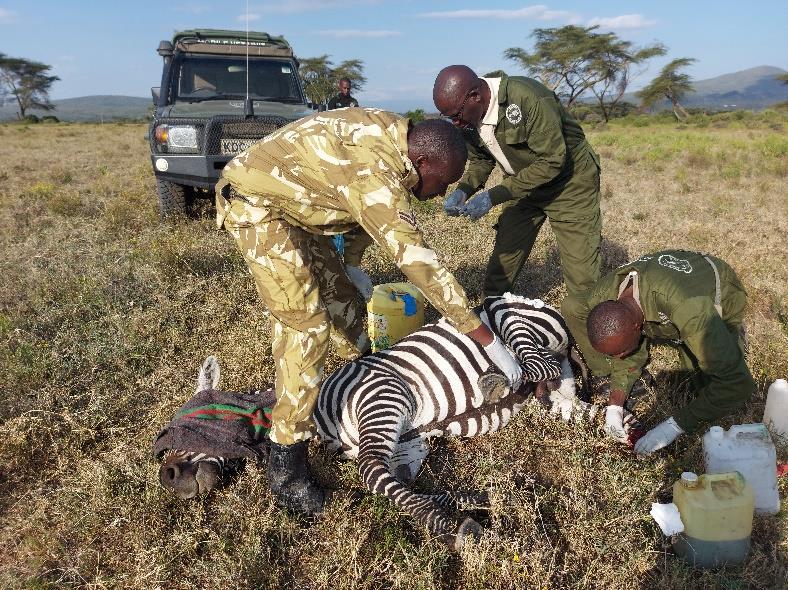

Zebra Snared Mundui Estates, Naivasha
Causes
This case was reported by Kijabe farm staff
Examination and management
A male wildebeest calf that could not stand or walk, the legs muscles were poorly developed and had degenerated.
The case had a poor prognosis. The wildebeest calf was put to rest. The carcass was disposed of properly at WRTI – main campus.

Wildebeest Natural
Kijabe Farm, Naivasha
Case
6– 14th June 2025
Giraffe Post-mortem
Sawela Lodges, Naivasha
This case was reported by Sawela Lodges Manager. The giraffe had been sick with papillomatous swellings on the lips, nostrils and upper neck. The swellings sometimes were bleeding. The giraffe happened to be immobile as the disease progressed to terminal stage.
Postmortem Examination
• Rigor mortis was kicking in
• Giraffe had hardened papillomatous swellings on the lips, nostrils and upper neck
• The carcass had a good body condition, body condition score of 4
• Tracheal mucosa had paint brush haemorrhages and was filled with blood-tinged froth
• Serosa of the lungs had paint brush haemorrhages
• Lungs were hemorrhagic and lung bronchi were filled with blood-tinged frothy fluid
• Heart - Coronary band fat was gelatinized and aortic arch was filled with a mass of chicken fat clot
• Colon – congested on the serosal surface, the mucosal surface had paint brush hemorrhages.
• The right kidney had paint brush hemorrhages on the cortex
Cause of death
The cause of death was respiratory failure due to lung function failure leading to cardiac arrest.

Waterbuck Snared
Mt Elgon National Park
Mt Elgon NP management had reported several animals snared by wires in the park
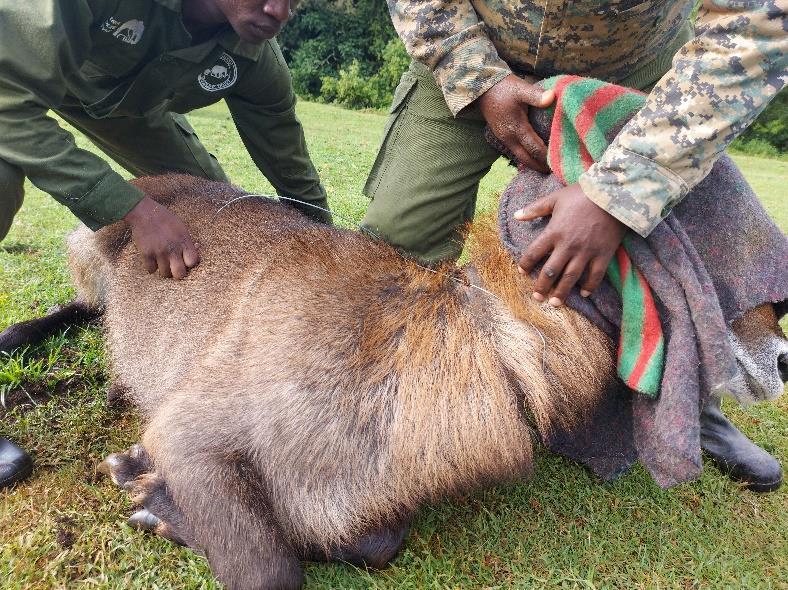
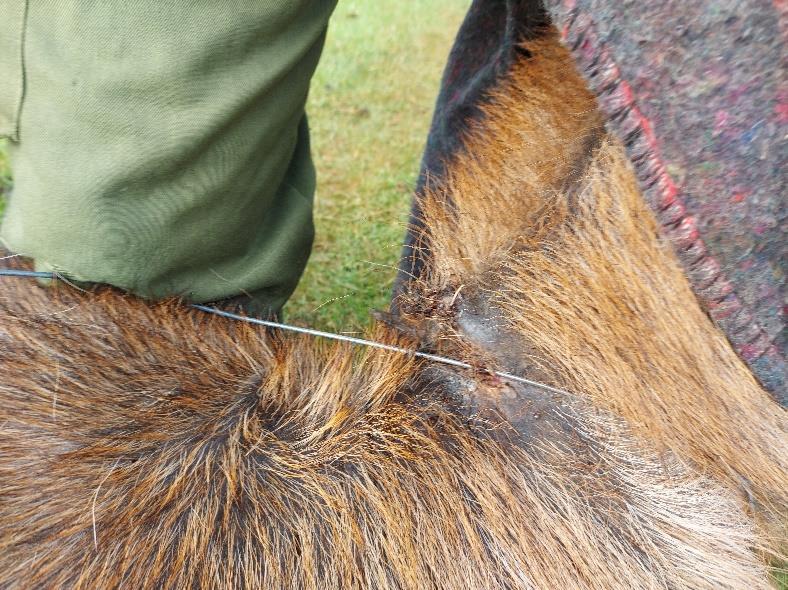
Immobilisation, examination and treatment
This water buck was darted with 6mg Etorphine plus 60mg Azaperone.
The waterbuck had suffered injuries and had been wounded by a wire snare on the neck. The wound was cleaned using water and rinsed with tincture of Iodine. A fly repellent (Alamycin® Aerosal) was applied.
The waterbuck was also administered 12,000mg Alamycin, 250mg Flumen and 40ml Catasol by IM route to cover for infection and inflammation and 5ml Intermectin (ivermectin) to manage parasites.
Reversal and prognosis
We reversed the waterbuck from anaesthesia using 75mg of Naltrexone given by IV and IM route. Prognosis of the case is good.


Case
Waterbuck Snared
Mt Elgon National Park
Mt Elgon NP management had reported several animals snared by wires in the park
Immobilisation, examination and treatment
This water buck was darted using 6mg Etorphine plus 60mg Azaperone. The waterbuck had suffered injuries and wounds due to a wire snare on the neck. The wounds were suppurative. The wounds were cleaned using water and rinsed with tincture of Iodine. A fly repellent (Alamycin® Aerosal) was applied.
The waterbuck was also administered 9,000mg Betamox, 250mg Flumeg and 40ml Catasol by IM route to cover for infection and inflammation and 5ml Intermectin (ivermectin) to manage parasites.
Reversal and prognosis
We reversed the waterbuck from anaesthesia using 75mg of Naltrexone given by IV and IM route. Prognosis of the case is good.


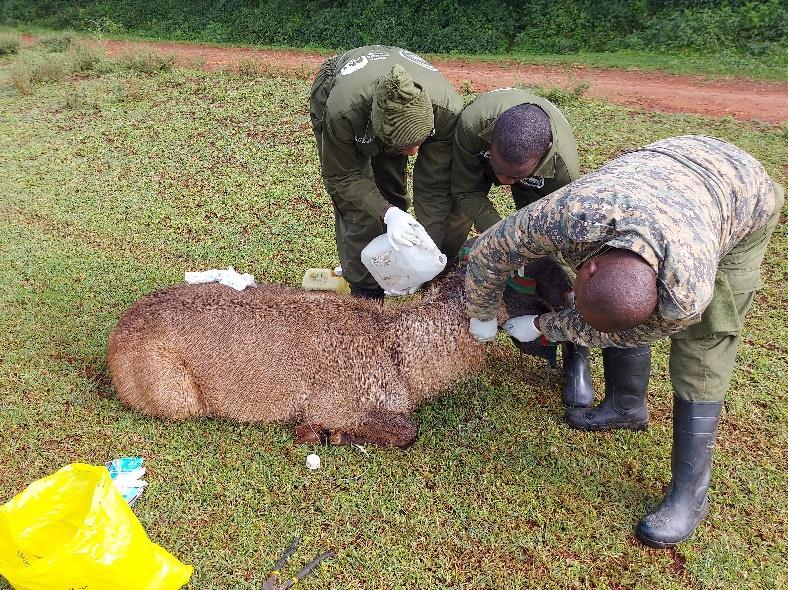
Case
Security Horse Technical Case
This horse (Flamingo) was due for routine check and deworming.
Examination and treatment
Mt Elgon National Park
We examined the horse and found Flamingo was infested with ticks and recommended cleansing with Stelladone® acaricide and shampoo.
We administered the following:
• Intermectin (Ivermectin) 10mL by SQ route
• Catasol 40mL by IM route
Recommendations and prognosis
We advised supplementation with Hay adlib plus Maize germ & Wheat bran. The diet should also include a mineral lick. Otherwise prognosis is good.

Warthog
Human-Wildlife Conflict
This case was reported by WRTI staff

Immobilisation, examination and treatment
WRTI, Naivasha

The warthog was darted using 4mg Etorphine Hcl plus 20mg Azaperone.
On examination the warthog had been trapped and wounded by a plastic bottle neck on the left hind leg. The leg had started to swell and was very tight. The swollen leg was the cause of severe lameness. The plastic was removed with a knife and the resultant wound cleaned with water and rinsed with tincture of Iodine. A fly repellent (Alamycin® Aerosol) was also applied.
The warthog was also administered 3,000mg Betamox 250mg Flumen by IM route to cover for infection and inflammation and 2ml Intermectin (ivermectin) to manage parasites.
Reversal and prognosis
We reversed the waterbuck from anaesthesia using 75mg of Naltrexone given by IV and IM route. Prognosis of the case is good. .


